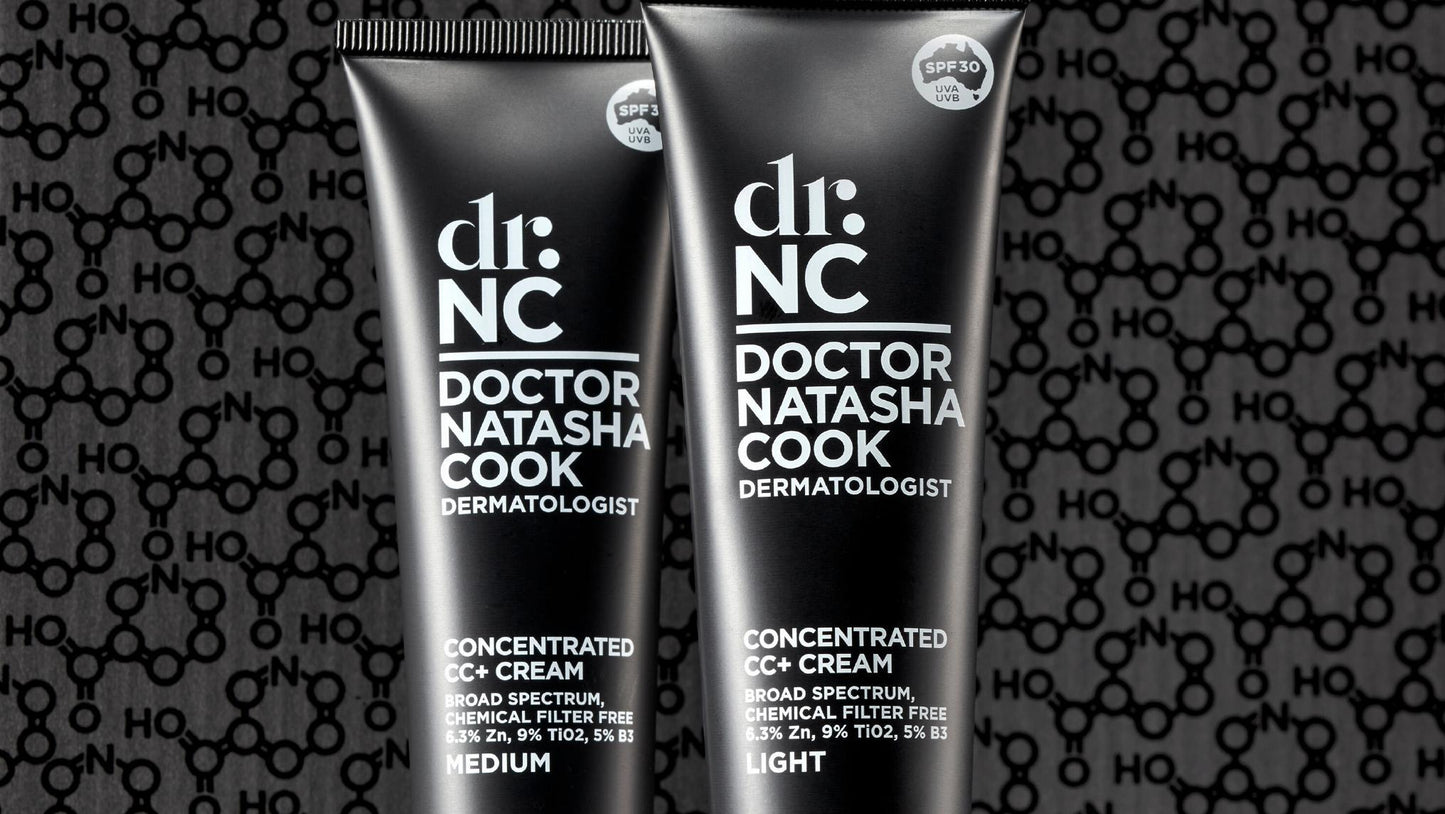
The UV is still strong ALL winter long.
As a Dermatologist in Australia, we have our work cut out for us. We have some of the harshest environmental conditions in the world with extreme UV indices, making the perfect storm to wreak havoc on your skin.
Shop the CC+ .
Facts and stats:
If you really want to hear the stats, let’s reference one of my faves, Australian Professor of Dermatology Dr Greg Goodman (et. Al.). In a study published in 2017, women from around the world where surveyed and reviewed for signs and degrees of facial ageing.
Conclusion: Facial ageing of Australian women is more dramatic than their northern hemisphere sisters.1
Australian women reported more severe signs of facial ageing sooner than other women and volume related changes up to 20 years earlier than those in the USA
Why? Our harsh environment in the home we call Australia and the damaging effects of the sun we claim to love.
You’ll see the telltale signs of a life lived under the Australian sun in most of the population. It Turns up as blotchy & uneven skin tone (pigmentation), scaly dry patches (yep, dehydration), redness (aka rosacea) and wrinkles, which all adds to a canvas of accelerated ageing.
Beyond just the aesthetic damage, our extreme levels of UV radiation levels with a depleted ozone layer, means we have the highest skin cancer rates in the world.
Did you know: 2 in 3 Australians will get a form of skin cancer within their lifetime?
Where does this leave us….Protect yourself where the sun DO shine.
Reality check. There’s no such thing as safe sun exposure. It’s up there with there is no such thing as a safe tan. Yep, that means any colour equals damaged DNA, so daily SPF is mandatory!
Problem: SPF doesn't feel good on my skin.
As a dermatologist, I know that one of the biggest barriers to wearing SPF is the fact that it feels like you are wearing sunscreen. Greasy, sticky, heavy and suffocating.
So When it comes to SPF, this needs to be a part of your daily ritual. Think of it as your skin religion. Come rain, hail or shine. That means in winter, in summer, and whenever you are exposed to UV. Short of living a life as a vampire this is the best you can do.
Shop the CC+ (limited time buy one get one).
Myth: My skin will be ok in winter as it is not so hot and the sun is not so damaging.
The reality is we often end up with MORE damage in winter as we don’t get so hot outside (less heat known as infrared radiation), so we spend longer periods outdoors.
Solution: Daily SPF that doesn’t feel like sunscreen
It’s one of the main reasons I added the Concentrated CC+ to my range of core products.
The idea was to ensure that the DrNC Club had SPF 30, that felt like your skin was naked (ie like you were wearing nothing at all). It has to be broadspectrum protection, chemical filter free, and include colour correcting particles. For those of you who aren’t familiar with the benefits of the Concentrated CC+ to catch you up click here.
I highly recommend as an essential part of your daily routine, guaranteeing an effective and elegant delivery of SPF 30 before you walk out the door.
Shop here.
Top Tips Protecting Winter skin:
Below I’ve got three small tips to help you keep up your guard even during winter.
1. IN winter UV levels are still as high, so don't skimp on SPF:
The temperature doesn’t have any effect on the UV factor. In fact, the lack of infrared (or heat) doesn’t trigger the same warning signs so in some cases we end up spending more time in the sun, giving us MORE damage...Application: A pea size per cheek….
2. Driving in the car:
also known as incidental UV exposure. Think about the time you spend walking to work (if you do), to the bus stop, getting lunch or driving your car. Do you have the windows down enjoying the sunshine? Probably, you’re human after all. But this is where that sneaky damage creeps up to bite you where the sun don’t shine. Make sure you are ALWAYS wearing your spf 30...
3. Choose your sun protector, wisely:
Not all sunscreens/protectors are created equally. Look for formulations with physical blockers (not chemical) like zinc or titanium dioxide. They are inert ingredients, meaning they don’t cause skin reactions. They are the safest way to get SPF protection.
In a study published in May 2019 FDA scientists found that four active chemical blockers found in commercial sunscreens (avobenzone, oxybenzone, octocrylene & ecamsule) were systemically absorbed into users skin. One of the ingredients was even found in user's breast milk, urine and plasma, raising red flags about toxicity. SO if in doubt, check out the label and go a physical blocker only sunscreen.
Article referenced:
1 (2017) Comparison of self-reported signs of facial ageing among Caucasian women in Australia versus those in the USA, the UK and Canada,
Greg J Goodman,1,2 Katherine S Armour,2,3 Julia K Kolodziejczyk,4 Samantha Santangelo5 and Conor J Gallagher4

























